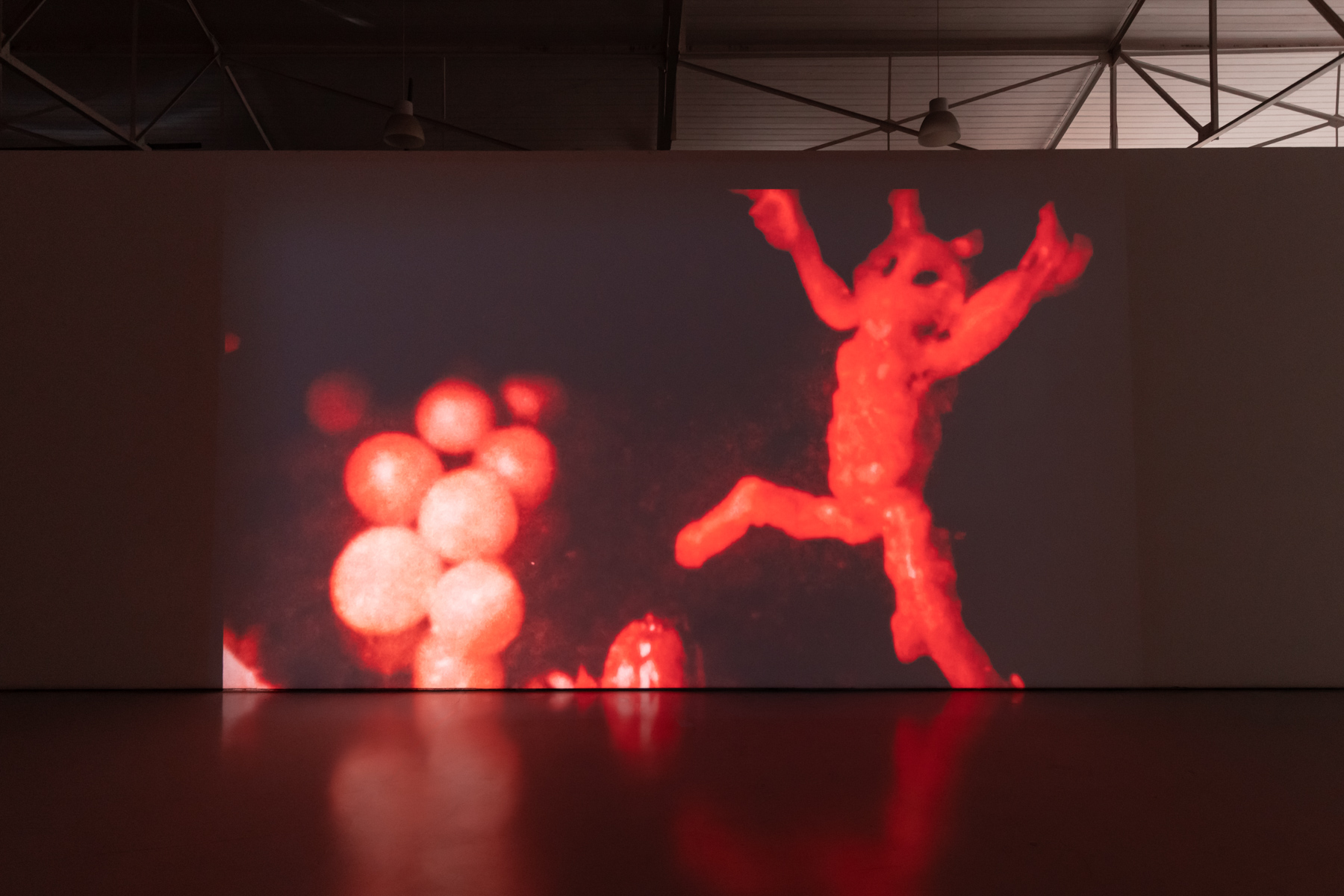“La mort” — death — only anticipates what is yet to come. The gesture of the hand-written “La mort” reveals an energy and mobility otherwise absent in the work’s puppet-like figures, if not for the camera’s own movement over the images themselves. The puppets’ uncanny anthropomorphism signals something that resembles, yet does not reproduce, a human or animal figure. Standing in, however, for their indexes, these symbols evoke a life unlike the one we know. In his canonical work Camera Lucida, Roland Barthes reminds us how cinema, unlike photography, which fastens down figures “like [preserved] butterflies,” enables beings to continue living (56–57). The cinematographic present is alive, carrying its referent without being tied to it. Bilbao’s diabolic lanternflies, or lanternfly devils, dance in stop motion, refusing to be pinned down like a dried, dead butterfly. In their motionless movement, Bilbao’s lanternfly flutters, confronting the humanity of the anthropomorphic yet inert clown-like puppet. AnaMary Bilbao’s oeuvre continuously questions notions of origin and conclusion. “All my processes revolve around the beginning and the end of images,” explains the artist in conversation. (…) Here, for the first time, Bilbao is not in direct touch with the image’s materiality; rather, she engages with virtual representations of artificially engineered images. As the artist explains, “DALL·E never ends; it always offers more and more variations of the same image. The image, then, is never ready; it never finds its conclusion. It is transformed by new information while simultaneously producing new data. The algorithm has no end in sight.”
— Alejandra Rosenberg
Ana Mary Bilbao, Prelude, 2024
16mm transferred to UHD video 7’10’’,
colour, sound (loop)
Sound: Anjo Solidão (2021) by Gabriel Ferrandini;
Um Ai (2019) by Maria Reis
With the generous support of Contemporânea and the Calouste Gulbenkian Foundation
Acknowledgements
Celina Brás, Alejandra Rosenberg Navarro,
Francisco Valente, Gabriel Ferrandini,
Maria Reis, Carlos Almeida, Uriah Cassuto

